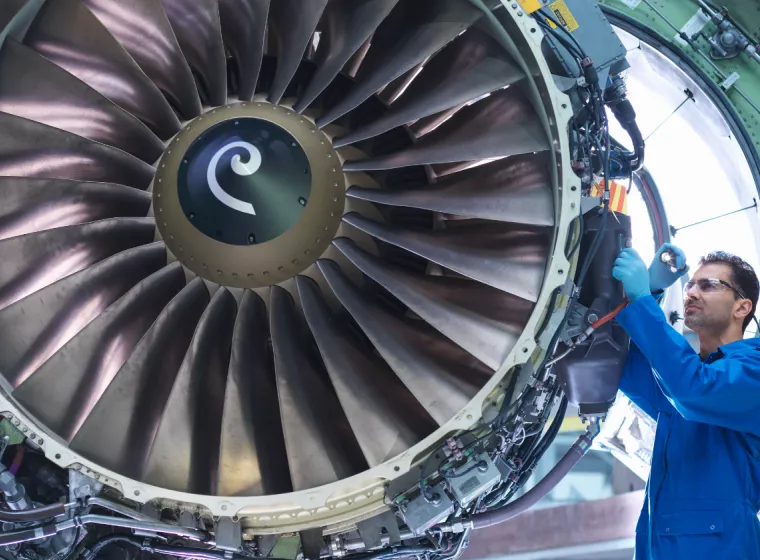March 31, 2022
Key takeaways from 15 years of data on battery-related incidents on planes
As high energy density battery-powered products proliferate across all aspects of modern life — from essential communication devices to home electronics, recreation, and transportation — it is expected that thermal runaway incidents will also occur. Although energy technologies are continuously improving, with well-manufactured and tested lithium-ion batteries being overwhelmingly safe, the reality is that many environmental and user variables can still result in safety issues.
For both consumers and product companies, greater availability of data could lead to a better understanding of whether a battery-related incident is isolated or indicative of a serious pattern, but there is little regulation on how thermal runaways are reported, tracked, or shared publicly, and it is likely that many are never reported or studied.
The Federal Aviation Administration (FAA) stands out as an exception, as the aviation industry is extremely safety conscious and highly regulated. The FAA has been logging all battery-related incidents on aircraft since at least 2006, whether installed, shipped, or operated, thus providing a rare data repository for such information.
Given a base of approximately 16,405,000 scheduled flights per year, the FAA's database of battery-related incidents offers product makers seeking greater context for claims of malfunction, damage, or injury a unique opportunity to cross-reference historical information on battery incidents; for consumers, airlines, and cargo companies, it offers an objective view of battery safety on planes over an extended period and how trends could drive aviation regulations and device safety going forward.
Five key takeaways
As a starting point, Exponent's interdisciplinary analysis using data from 2006 through late 2021 offers the following key takeaways. The insights derived from the FAA database below include both passenger and cargo flights and battery-related incident reporting with major categories showing up as cell phones, laptops, e-cigarettes/vapes, and battery packs/batteries (loose battery packs).
1. Incidents are very low overall, indicating strong safety standards & regulatory enforcement
At their peak in 2018, the FAA reported just 50 battery-related incidents on planes. When compared to billions of passenger data points each year, this number underscores the rarity of thermal runaway occurrences. More importantly, when looking into the individual reports for 2018, most incidents were identified during screening and boarding processes. There were only six injuries reported in all the years of data. Actual fire outbreak and injuries were rare, with the most severe runaway events taking place at cargo shipping holds where damage resulted from forklift or transport errors.
Overall, there were 21 diversions of passenger flights in the data set. In many cases, the flight crew was able to deal with incidents in the cabin with onboard safety equipment, such as "burn bags" (fire mitigation bags). Additionally, 46% of the reported incidents on passenger aircraft were not in flight at the time of the incident.
2. Incidents are increasing
Despite overall low numbers, the FAA's data shows a notable increase in incidents on both passenger and cargo planes across all devices between the years 2014 and 2017. Although 2019 marked what appears to be a positive decline in incidents, the impact of COVID-19 on commercial and cargo flights beginning in March 2020 and continuing into 2021 may be a 5. significant contributor to the apparent downturn in incidents. It is not yet known how this might have changed battery shipping and passenger numbers. The number of reported incidents in 2020 (39) is also high compared to the drastic reductions in flights for much of that year due to COVID-19.
3. Passenger flights dominate the reports
In total, the FAA database includes 339 incidents over a 15-year period, with just 25% attributed to cargo shipments overall. When looking closely at the uptick from 2014 onward, it appears that passenger flights are increasingly responsible for incidents — more than 80% through 2021. Whereas cargo flights were referenced in over 50% of battery-related reporting from 2006 to 2013, that number dropped to less than 20% between 2014 and 2021, during which time the total number of incidents more than quadrupled from 64 to 275. It is unclear how reporting requirements may have affected the incident rate and ratios.
4. Loose battery packs cause the most incidents
Loose batteries and battery packs are the number one culprit of incidents on planes, spiking to an average of 25 per year from 2017 to 2019. E-cigarettes and vape devices are the number two most frequent cause of incidents, although the FAA did not start collecting information in this category until 2009. Interestingly, cell phones and laptops, which are likely carried at a higher frequency onto planes, factor into incident reports less often. The highs for cellphone and laptop events were 10 in 2018 and eight in 2019, respectively.
5. The FAA has issued guidance on lithium batteries
Before 2015, the data shows that 39% of passenger aircraft incidents occurred in checked bags. The high percentage of loose battery packs in the data was a concern to the FAA. In 2015, the FAA issued safety alerts on e-cigarettes and spare lithium batteries to reduce batteries in checked bags. The data since 2015 indicates that 20% of the reported incidents occurred in checked bags, thus showing a large reduction in these incidents.
Among Exponent's preliminary analyses, the most important point to emphasize is that the number of battery-related incidents on planes remains very low, and both cargo and passenger flights are very safe. However, whether this trend tracks across industries is difficult to estimate, with few readily accessible resources. To an extent, this difficulty is intrinsic to the number of companies, manufacturers, subcontracted parts suppliers, and product types in the market, all of which create barriers to collecting data on thermal runaway events.
The value of this FAA database is that it makes information about battery-related incidents captured over a significant length of time publicly available, with strong potential remaining to customize queries that lift deeper insights out of the raw information. The unique safety and regulatory concerns related to aviation have not led to a high level of battery injuries but have provided a useful data set for better understanding battery thermal events.
How Exponent Can Help
Exponent offers strategic, multidisciplinary consulting services for energy technology companies and the aviation industry, including product safety assessments and regulatory compliance support. Our battery engineers and electrochemists have helped develop and conduct test protocols for accelerated aging studies, cell cycling procedures, and mechanical testing of lithium-ion battery packs used in a variety of personal electronics and other devices. Our aeronautical engineers have investigated aircraft fires and other accidents and have a deep understanding of the aerospace regulatory landscape. We can leverage decades of experience in proper manufacturing practices and failure analysis to help our clients design and manufacture safer, more reliable products.
What Can We Help You Solve?

Aeronautical Engineering
Engineering consultation for commercial aviation, aerospace technologies, and drones.
![Aeronautical Engineering [TS]](/sites/default/files/styles/cards_home_card/public/media/images/GettyImages-1401132682.jpg.webp?itok=KPBpqnE2)
Mechanical Engineering Expertise for Aviation & Aerospace
Address complex mechanical engineering problems involving general aviation or commercial aircraft.
![COMPUTER SYSTEMS & CONTROLS [EECS]](/sites/default/files/styles/cards_home_card/public/media/images/GettyImages-1352474775.jpg.webp?itok=EahM3u35)
Instrumentation & Control Systems
Improve the reliability and performance of control systems and their sensors, processors, actuators, and logic.
Insights



